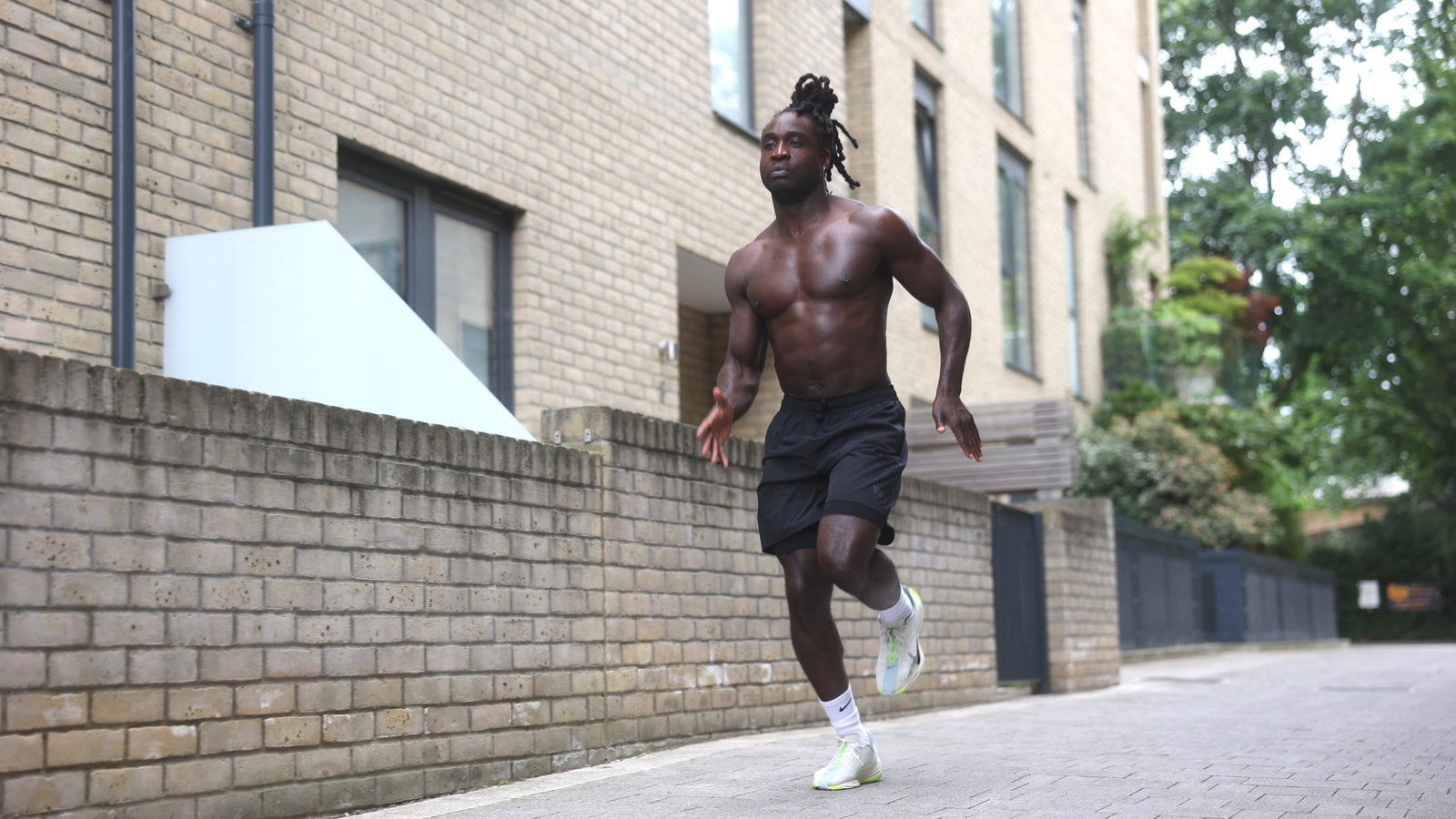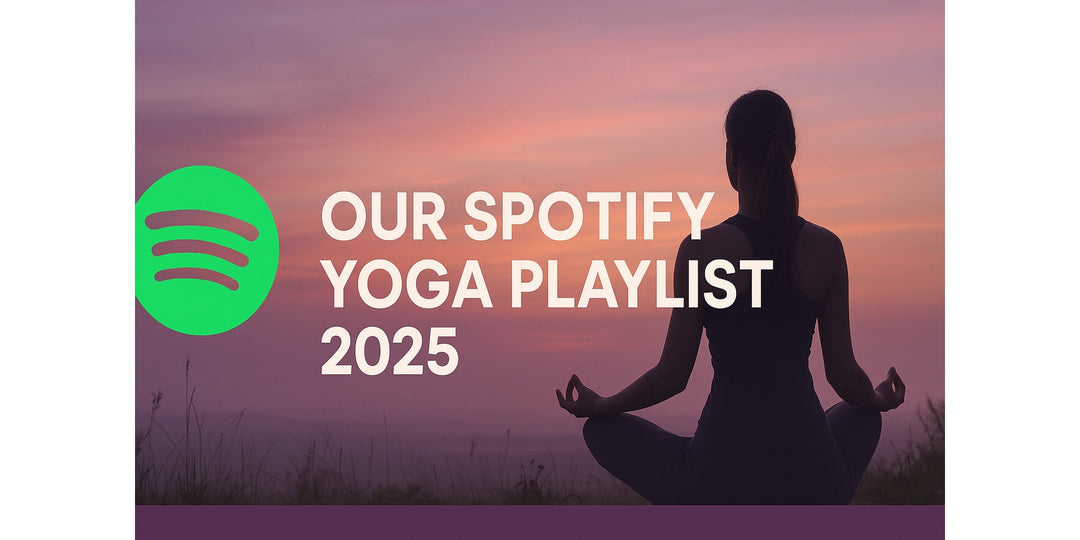Why Every Runner Should Do Yoga: Benefits, Tips & Best Practices

Why Every Runner Should Do Yoga: Benefits, Tips & Best Practices
Running and yoga might seem like opposite ends of the fitness spectrum – one high-impact and dynamic, the other gentle and meditative. However, these two practices complement each other beautifully, creating a powerful combination that can transform your running performance, prevent injuries, and enhance your overall well-being.
Whether you're a casual jogger or training for marathons, incorporating yoga into your routine can be the game-changer you've been looking for. Let's explore why every runner should embrace yoga and how to get started.
Essential Gear for Runners Who Do Yoga
The Perfect Partnership: Running and Yoga
Running and yoga create a synergistic relationship that addresses the complete spectrum of fitness needs. While running builds cardiovascular endurance and lower body strength, yoga provides flexibility, balance, mental clarity, and injury prevention – exactly what runners need to perform at their best.
Key Benefits of Yoga for Runners
1. Injury Prevention and Recovery
Running is a repetitive, high-impact activity that can create muscle imbalances and tightness. Yoga addresses these issues by:
- Improving flexibility: Counteracts the tightness that develops in hips, hamstrings, and calves
- Strengthening stabilizing muscles: Builds core strength and improves balance
- Enhancing body awareness: Helps identify and correct imbalances before they become injuries
- Promoting recovery: Gentle stretching and breathing techniques aid muscle recovery
2. Enhanced Performance
Regular yoga practice can directly improve your running performance through:
- Better breathing efficiency: Pranayama (breathing techniques) improve oxygen utilization
- Increased range of motion: Greater flexibility leads to more efficient stride mechanics
- Improved balance and proprioception: Better stability on uneven terrain
- Mental focus: Meditation aspects help with race-day concentration
3. Mental and Emotional Benefits
The mental aspects of yoga complement running's psychological benefits:
- Stress reduction: Yoga's meditative qualities provide mental balance to running's intensity
- Mindfulness: Develops present-moment awareness useful during long runs
- Emotional regulation: Helps manage pre-race nerves and training stress
- Better sleep: Relaxation techniques improve recovery sleep quality
Best Yoga Practices for Runners
Pre-Run Yoga (5-10 minutes)
A short, dynamic sequence to prepare your body for running:
- Cat-Cow stretches: Warm up the spine
- Hip circles: Mobilize hip joints
- Leg swings: Dynamic hamstring and hip flexor preparation
- Standing forward fold: Gentle hamstring and calf stretch
Post-Run Yoga (15-20 minutes)
Focus on restoration and flexibility with our premium yoga mats:
- Pigeon pose: Deep hip flexor and glute stretch
- Seated forward fold: Hamstring and lower back release
- Supine spinal twist: Releases tension in the lower back
- Legs up the wall: Promotes circulation and recovery
Recovery Day Yoga (30-60 minutes)
Longer sessions for deep restoration and strength building:
- Yin yoga: Long-held poses for deep tissue release
- Restorative yoga: Gentle poses with props for maximum relaxation
- Vinyasa flow: Dynamic sequences for active recovery
- Core-focused sequences: Build the stability runners need
Essential Yoga Poses for Runners
Hip Openers
Runners often develop tight hips from repetitive forward motion. Key poses include:
- Low lunge: Stretches hip flexors and strengthens legs
- Warrior II: Opens hips while building leg strength
- Bound angle pose: Releases inner thigh and hip tension
- Figure-4 stretch: Targets piriformis and outer hip muscles
Hamstring and Calf Stretches
Combat the tightness that develops from repetitive running motion:
- Standing forward fold: Comprehensive posterior chain stretch
- Pyramid pose: Intense hamstring stretch with balance challenge
- Downward dog: Stretches calves while strengthening arms and core
- Seated forward fold: Deep hamstring release
Core Strengthening
Build the stability that supports efficient running form:
- Plank variations: Build overall core strength
- Boat pose: Targets deep abdominal muscles
- Side plank: Strengthens lateral core muscles
- Bird dog: Improves core stability and coordination
Many of these poses can be enhanced with props like our Warrior Yoga Block, which provides support and helps you achieve proper alignment, especially when flexibility is still developing.
Creating Your Runner's Yoga Routine
Weekly Schedule Integration
Here's how to effectively combine running and yoga:
Monday: Easy run + 20-minute restorative yoga
Tuesday: Speed work + 10-minute post-run yoga
Wednesday: 45-minute yoga class (rest day from running)
Thursday: Tempo run + 15-minute recovery yoga
Friday: Easy run + gentle yoga flow
Saturday: Long run + extended post-run yoga session
Sunday: 60-minute yoga class or complete rest
Equipment You'll Need
Invest in quality gear to support both practices:
For Running: Explore our complete men's running clothing collection featuring moisture-wicking fabrics and performance-focused designs.
For Yoga: Check out our men's yoga clothing line, designed for flexibility and comfort during practice.
Yoga Equipment: Browse our yoga mats and yoga accessories to create the perfect practice space.
Getting Started: Tips for Running Yogis
Start Small
Begin with just 10-15 minutes of yoga after your runs. Focus on basic stretches and gradually build up to longer sessions as your body adapts.
Listen to Your Body
Some days you'll need gentle, restorative yoga, while others might call for more dynamic practice. Learn to read your body's signals and adjust accordingly.
Focus on Problem Areas
Pay special attention to areas where runners commonly develop tightness: hips, hamstrings, calves, and IT bands. Our Eco-Warrior Yoga Belt can help you safely deepen stretches in these areas, while Warrior Yoga Blocks provide support for poses that require more flexibility.
Consistency Over Intensity
Regular, shorter yoga sessions are more beneficial than occasional long practices. Aim for some form of yoga 4-5 times per week, even if it's just 10 minutes.
Common Mistakes to Avoid
Overdoing It Initially
Don't jump into advanced poses or long sessions immediately. Build gradually to avoid injury and burnout.
Ignoring Proper Form
Quality over quantity – better to do fewer poses correctly than many poses poorly. Consider taking classes or working with an instructor initially.
Skipping the Basics
Foundation poses like downward dog and warrior poses are crucial. Master these before moving to advanced variations.
Not Adapting to Training Cycles
During heavy training periods, focus more on gentle, restorative yoga. Save intense yoga sessions for lighter training weeks.
Yoga Styles Best Suited for Runners
Hatha Yoga
Perfect for beginners, focusing on basic poses held for longer periods. Ideal for building flexibility and learning proper alignment.
Yin Yoga
Passive poses held for 3-5 minutes, perfect for deep tissue release and recovery. Excellent for rest days or after hard training sessions.
Vinyasa Flow
Dynamic sequences that build strength and flexibility simultaneously. Good for active recovery days or cross-training.
Restorative Yoga
Gentle, supported poses using props. Perfect for stress relief and deep relaxation after intense training periods.
Measuring Progress and Benefits
Physical Improvements
Track these measurable benefits:
- Increased flexibility: Monitor improvements in forward folds and hip mobility
- Better balance: Notice improved stability during single-leg poses
- Reduced injury frequency: Keep track of aches, pains, and injury patterns
- Enhanced recovery: Monitor how quickly you bounce back from hard runs
Performance Metrics
- Running efficiency: Notice if your stride feels more fluid
- Breathing patterns: Improved breath control during runs
- Mental focus: Better concentration during long runs or races
- Overall well-being: Reduced stress and better sleep quality
Building a Sustainable Practice
Set Realistic Goals
Start with achievable targets like 10 minutes of yoga three times per week. Gradually increase duration and frequency as the habit solidifies.
Create a Dedicated Space
Having a designated yoga area with your yoga mat and props readily available makes it easier to maintain consistency.
Track Your Practice
Keep a simple log of your yoga sessions alongside your running log. Note how you feel before and after practice to identify patterns and benefits.
Find Community
Join running groups that incorporate yoga, or find yoga classes specifically designed for athletes. Community support enhances motivation and accountability.
Conclusion: Embrace the Runner-Yogi Lifestyle
The combination of running and yoga creates a powerful synergy that addresses every aspect of fitness and well-being. While running builds cardiovascular strength and endurance, yoga provides the flexibility, balance, and mental clarity that make you a more complete athlete and person.
Starting your yoga journey as a runner doesn't require perfection or advanced poses. It simply requires consistency, patience, and the right equipment to support your practice. Whether you're looking to prevent injuries, improve performance, or find better balance in your training, yoga offers tools that every runner can benefit from.
Ready to begin your runner-yogi journey? Explore our complete collections of men's running clothing, men's yoga clothing, yoga mats, and yoga accessories to support both aspects of your training.
Remember, the best practice is the one you'll actually do consistently. Start small, stay patient, and let the combined power of running and yoga transform your fitness journey.










Leave a comment